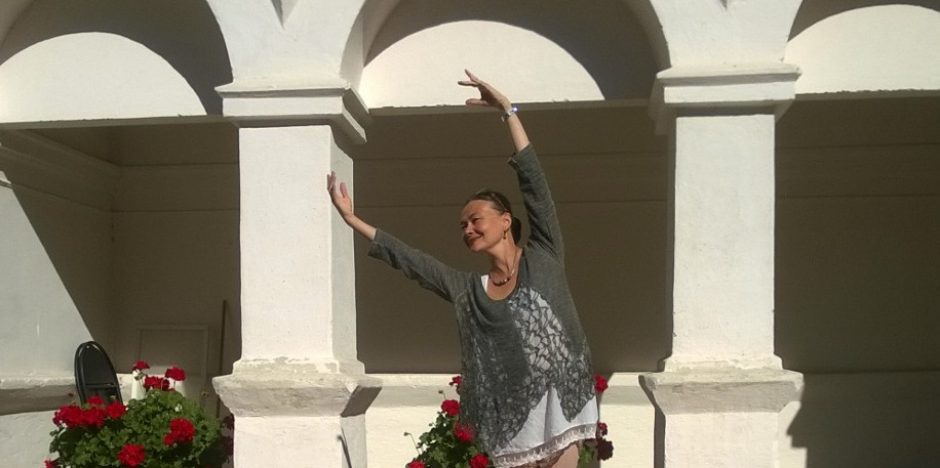I am posting the program for Kinesteettinen kielisuihku (Kinesthetic Language Shower) and welcoming a group of teachers from Eastern Uusimaa to my workshop on Porvoo Campus. The program with short notes on exercises and a few videos can be accessed here: http://prezi.com/nlbcymjzqzbr/kinesteettinen-kielisuihku/
On the eve of the workshop I am reading Michel Chekhov’s classic, To the Actor (1953). This is a handbook with concrete exercises and, surprisingly, I recognize many of these from my own kinesthetic language lessons. The exercises are familiar, however, the vocabulary belongs to theatre studies. I find Chekhov’s writing very lucid and I immediately note that his instructions are applicable to dance and movement improvisation classes as well. I quite agree with contemporary choreographer Joona Halonen who claims that dancers should stop maintaining the myth of not being able to conceptualize movement. Accordingly, I am looking for ways of explaining embodiment, corporeality and kinesthetic awareness to my students.
Since my field of interest is to teach students to become better speakers and performers, I am particularly fascinated by Chekhov’s concept of “Psychological Gesture”, defined by Lisa Dalton in following terms:
If we define gesture to mean a movement that has intention, we could say that the Psychological Gesture is a movement that expresses the psychology of the character. Chekhov defines the psychology to consist of the thoughts, feelings and will of a human being. Hence, the PG is a physical expression of the thoughts, feelings and desires of the character, incorporated into one movement. You can liken it to a moving logo, like the Nike logo, which captures the essence of Nike in one image.
So, in one movement, the PG awakens the essence of the character in you thus aligning your thoughts, feelings and will (objective) with that of the character. When this happens, your walk, your expressive mannerisms, your voice and line delivery are all inspired by one moving image. You perform the gesture prior to your scene to trigger your artistic nature. While in the scene, if your inspiration weakens, you simply envision the gesture in your imagination as you are acting and it will revitalize you.
Thus, as language teacher I ask my students what is the Psychological Gesture of a confident speaker? It does definitely not include slouching shoulders, fidgety leg movements, clasped arms or unfocused gaze. Chekhov emphasizes feeling of ease, form, beauty and aesthetic wholeness. All these are applicable to spoken skills. How do you walk to the front of the room? How do you catch the attention of the audience? How do you maintain their interest? The answer lies in clarity and focus. The posture should be good and gestures should be clear and simple. Moreover, the speaker should know the purpose of his/her use of space. Everything starts from the feeling of being comfortably embedded in space, which in turn will result in ease and clarity of speech.
Finally, yes, Michel Chekhov was related to the great Russian playwright: he was Anton Chekhov’s nephew. Now as I have discovered his legacy, I will definitely have a closer look at his oeuvre. Interestingly, great Hollywood actors such as Clint Eastwood, Jack Nicholson and Sir Anthony Hopkins have been instructed in the Chekhov Method, all being actors I greatly admire. So this is certainly something worth pursuing in language teaching, after all, it is the interaction between human beings that makes all the difference.
